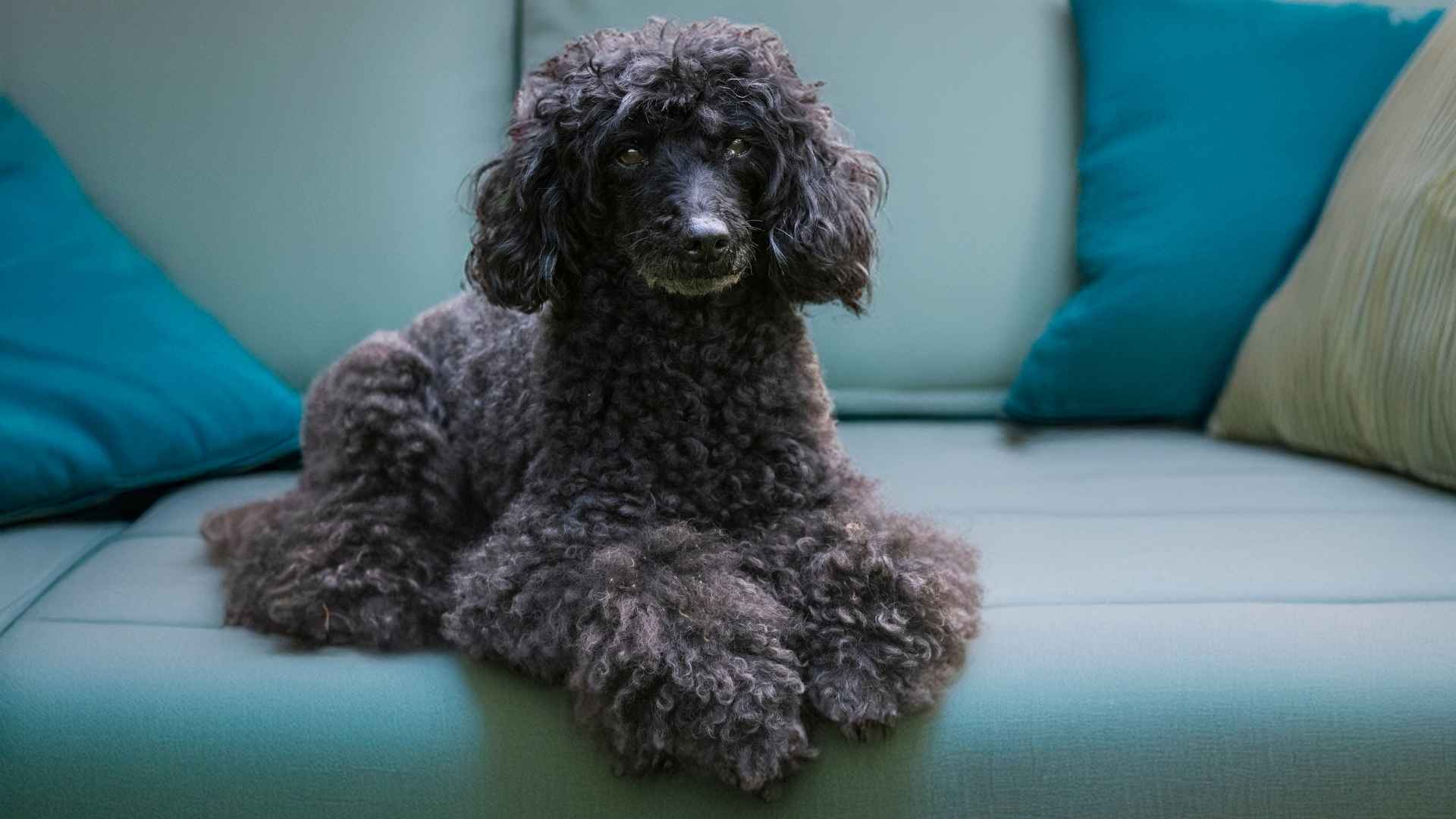Curly-haired dogs stand out not only for their charm and cuteness but also for their unique genetics. While breeds like Poodles and Labradoodles may be the most well-known examples, true curly-coated dogs are surprisingly rare. This distinctive coat type is the result of inheriting two specific KRT71 gene mutations, just one leads to waves, not curls. That means if your pup has a coiled coat, you’re looking at a breed with both visual appeal and genetic exclusivity.
Historically, many curly-coated dogs were bred for work, not show. From braving chilly waters as fishermen’s companions to herding livestock across damp, rugged landscapes, these breeds relied on their curls for warmth and water resistance. Their functional coats often protected them from harsh environments long before they became household favorites.
Today, curly-coated breeds continue to win hearts thanks to their hypoallergenic potential, low shedding, and undeniably pettable texture. Whether you love the tight spirals or the springy curls, one thing’s certain: curly-coated dog breeds are as delightful to look at as they are to live with.
Curly Coat Dog Breeds
1. Poodle
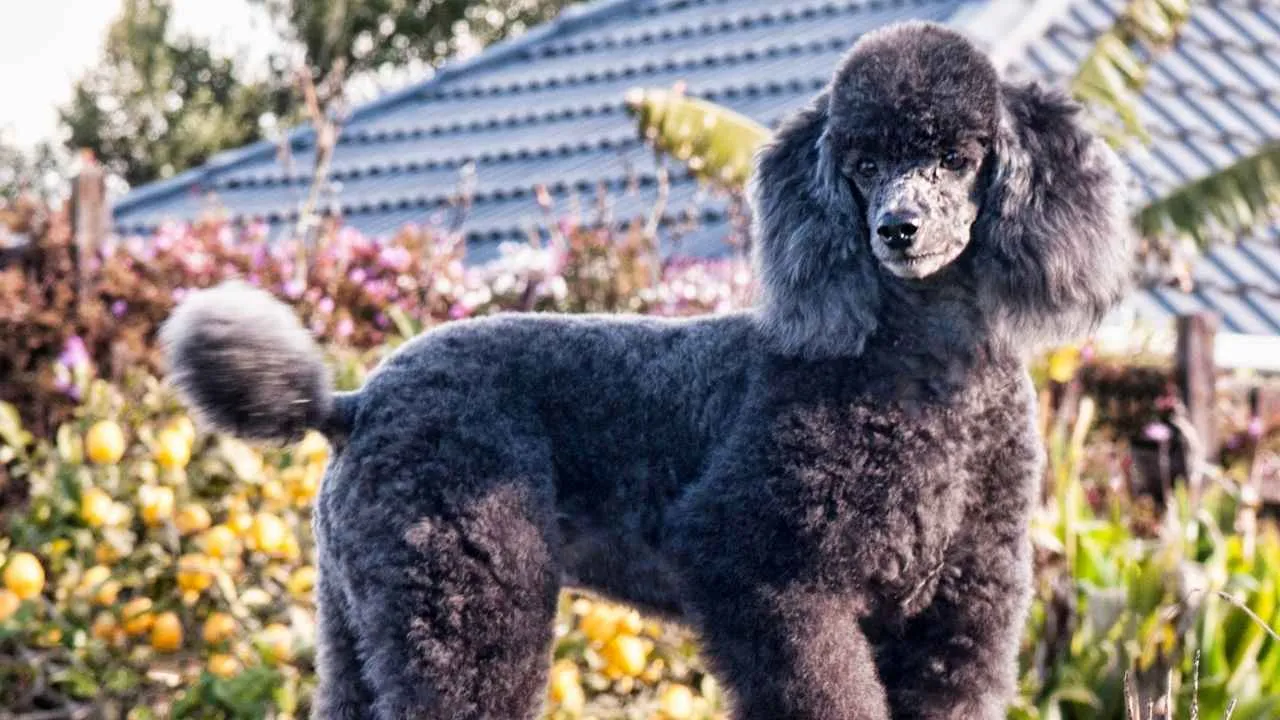
When you think of curly-coated dog breeds, the Poodle is likely the first to come to mind. Whether Toy, Miniature, or Standard, all varieties boast the breed’s signature tight, dense curls. According to the AKC, the Standard Poodle is energetic, confident, and highly intelligent. Originally bred as water retrievers, their coat served a functional purpose: insulating vital organs while allowing free movement in water.
Today, those same curls are part of what makes the Poodle one of the most popular and easily recognized breeds around the world. Beyond their elegant looks, Poodles are highly intelligent, energetic, and eager to please, making them a favorite in both homes and show rings.
Grooming
Poodles require consistent grooming to keep their curly coats healthy. Their hair doesn’t shed much, but it mats easily if not properly cared for. Daily brushing is recommended to prevent tangles, and many pet parents choose to keep the coat trimmed short for ease.
If kept long, the coat must be thoroughly brushed to the skin to avoid mats forming at the roots. Regular visits to a professional groomer, every four to six weeks, are common, especially for bathing, trimming, and nail care.
Fact: Poodles are considered hypoallergenic due to their low-shedding curls, making them an excellent choice for allergy sufferers.
2. Portuguese Water Dog
The Portuguese Water Dog has dense, water-resistant curls and an athletic build. Purina states that the brave and energetic Portuguese Water Dog was originally bred to help fishermen with tasks like retrieving, diving, and guarding. With webbed feet, a sturdy build, and a water-resistant coat, this breed is exceptionally skilled at swimming and has earned the nickname “Cão de Água,” or “dog of water.”
Their tightly curled or wavy coats are more than just stylish; they serve a vital purpose in keeping the dogs warm and buoyant during chilly swims. Intelligent, spirited, and eager to please, Portuguese Water Dogs make fantastic companions for active families and are known for excelling in agility and obedience sports.
Grooming
Though this breed’s curls shed very little, they do require consistent upkeep. Since the Portuguese Water Dog’s coat is made of hair rather than fur, it grows continuously and needs frequent brushing to prevent matting.
Most owners opt for professional grooming every four to six weeks to keep the coat tidy and comfortable. Daily brushing around the eyes and ears also helps prevent tangles and keeps their vision clear.
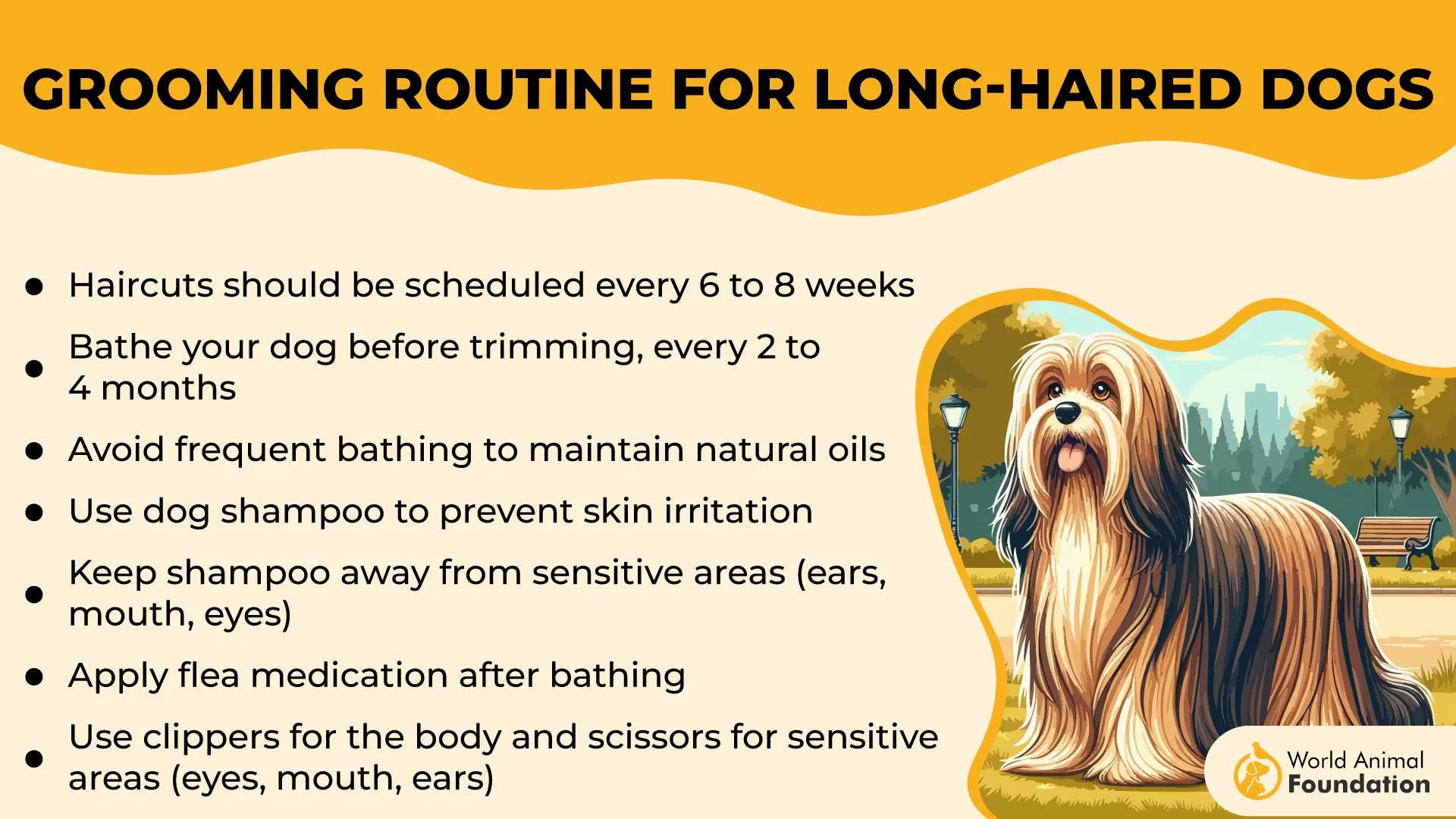
Fact: Bo Obama, the famous First Dog, was a Portuguese Water Dog chosen for his hypoallergenic coat, ideal for families with allergies.
3. Curly-Coated Retriever
The Curly-Coated Retriever is one of the oldest and most distinctive among curly coat dog breeds, with origins dating back to the late 1700s. Known for their sleek yet rugged look, these dogs are draped in tight, crisp curls that cover their bodies from head to tail.
Available in just two rich colors, black or liver, their coats are not just eye-catching but also practical, originally designed to be waterproof for retrieving game from chilly waters. Highly intelligent and eager to please, Curlies thrive on positive reinforcement and early training to channel their boundless energy into good behavior.
PetMD notes that Curly-Coated Retrievers are very loving toward their families and are a good match for children who understand how to properly engage with pets.
Grooming
Unlike many curly-coated dogs, the Curly-Coated Retriever is surprisingly low-maintenance. Their curls rarely mat and don’t require frequent brushing; doing so can actually lead to unwanted frizz. Instead, let their coat air-dry after a bath to preserve the natural texture.
Bathing is only necessary after swimming or if they get especially dirty. They shed minimally year-round, with a slight increase during seasonal changes; during those times, a rake brush can help manage loose hair.
Fact: Despite their resemblance to other retrievers, Curlies stand out with their unique curls and are one of the earliest documented retrieving breeds.
4. Spanish Water Dog
The Spanish Water Dog has dense, woolly curls that can form natural cords if left untrimmed. These rustic, medium-length coats hail from Spain, where they were bred to herd livestock and assist fishermen. WebMD claims that Spanish Water Dogs are energetic and do best when provided with plenty of mental and physical activity.
Their tightly curled coats not only help them navigate wet or rough environments but also contribute to their signature mop-like look. Solid colors such as brown, black, beige, and white, or combinations thereof, are common, along with their hallmark triangular, drop-down ears.
Grooming
This breed’s coat care is unlike that of any other curly-coated breed. Spanish Water Dogs should never be brushed or combed, as this disrupts the natural texture and can cause matting. Instead, the coat should be trimmed uniformly two to three times a year, depending on the owner’s preference.
When bathing, use a mild dog shampoo and avoid rubbing. Pour lather into the coat gently, rinse thoroughly, and allow the dog to air dry naturally. Towel blotting is fine, but rubbing can damage the curls.
Fact: The Spanish Water Dog’s coat is so unique that even bathing requires special care; shampoo must be squeezed in gently, never scrubbed, to preserve its structure.
5. Pumi

Originating in Hungary, this agile herding breed is known for its boundless energy, intelligence, and alert nature. Bred to herd sheep, the Pumi is still happiest when given a job to do, whether that’s rounding up livestock or engaging in spirited games of fetch. Their animated personality makes them a great choice for active families who can provide both mental and physical stimulation.

Grooming
The coat of these curly dogs is a unique blend, about 50% soft hair and 50% harsher strands, all uniform in length. This combination gives their coat its signature corkscrew texture. Grooming is relatively low-maintenance: combing every three to six weeks is usually sufficient.
After brushing, wetting the coat helps restore its curls naturally, skip the blow-dryer, which can flatten their distinctive ringlets. Occasional trims help keep their look neat, especially around the face, but frequent professional grooming isn’t required.
Fact: Despite their fluffy appearance, Pumik are light shedders, and their coats maintain their curly character best when air-dried after grooming.
6. Irish Water Spaniel
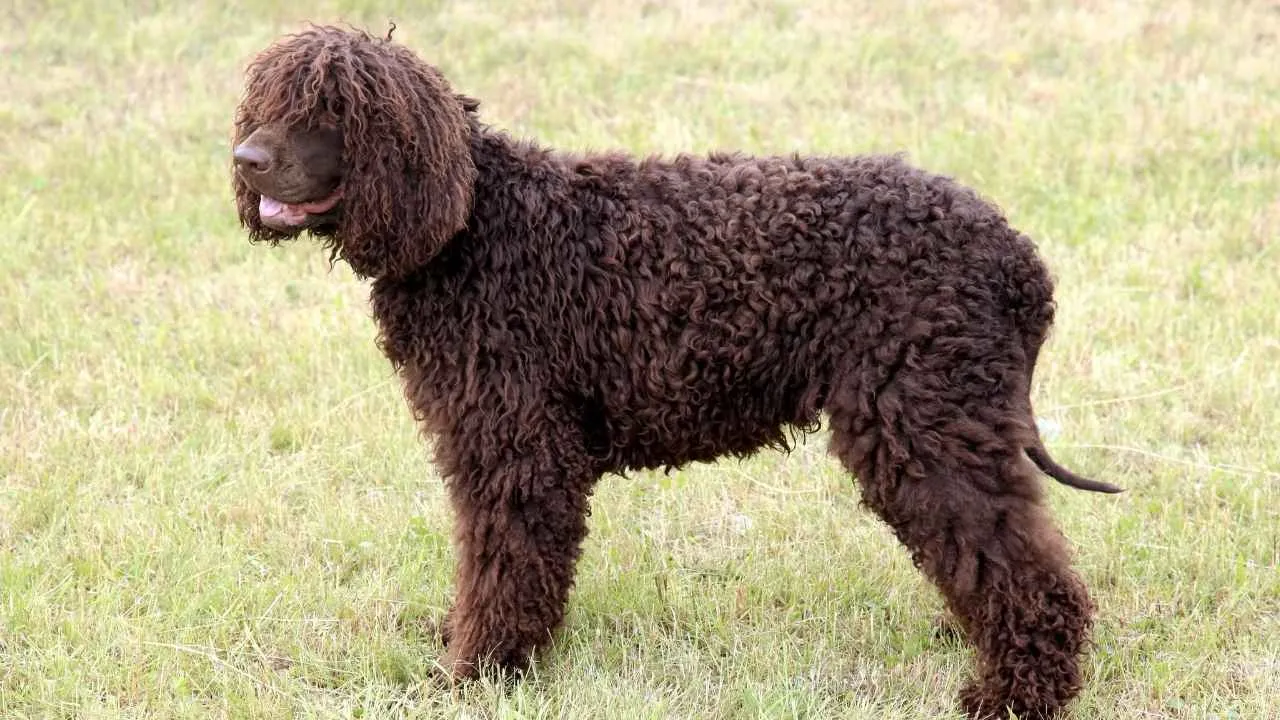
As the tallest of all AKC-recognized spaniels, this breed commands attention with its rich liver-colored curls, clean-shaven face, and signature “rat tail.” Originally bred for water retrieval, these spaniels are avid swimmers with webbed feet and a love for adventure, ideal for active families who enjoy the outdoors.
Britannica notes that the Irish Water Spaniel is recognized for being playful and easy to train. Their temperament and energetic nature make them both entertaining companions and reliable working dogs.
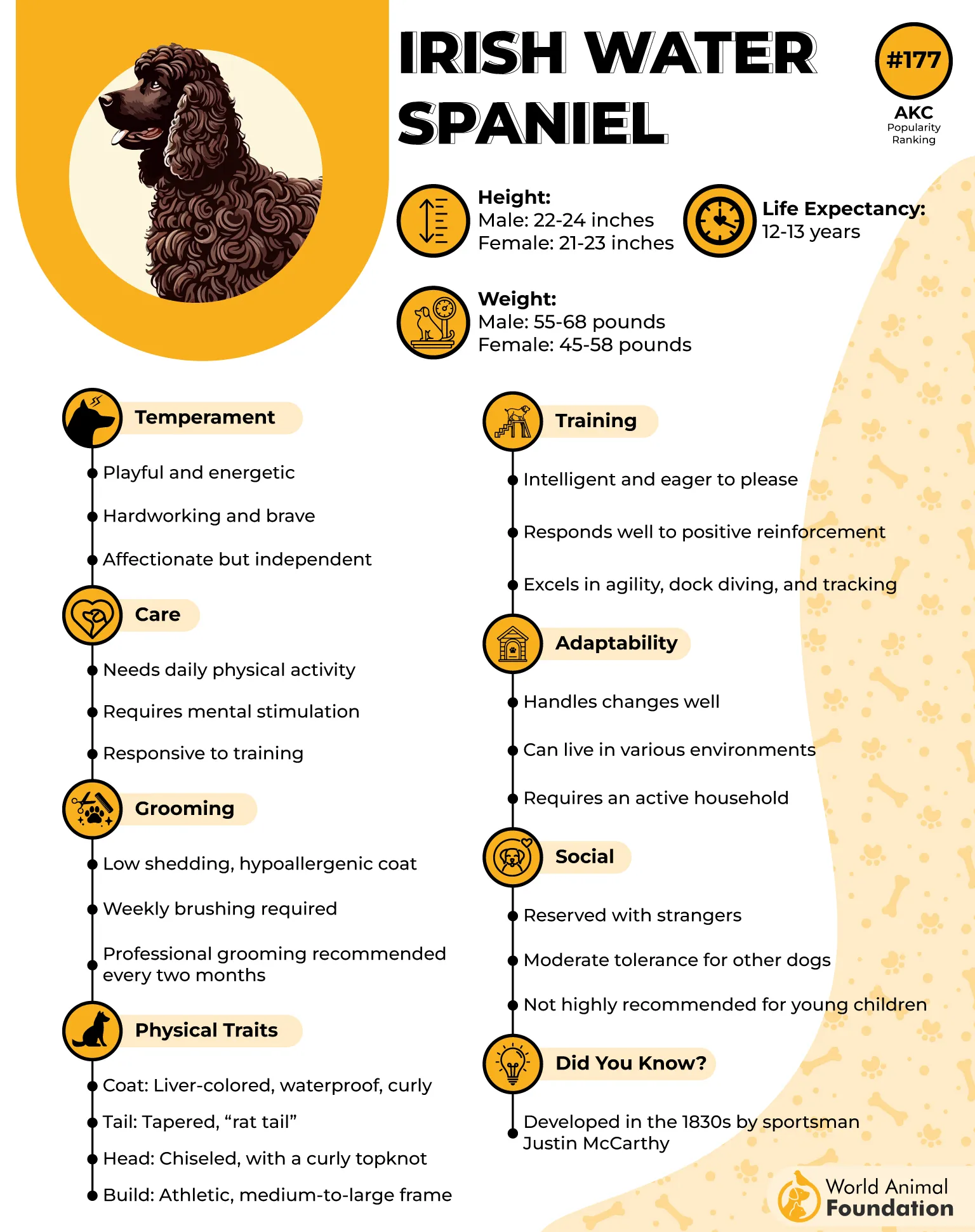
Grooming
Maintaining the Irish Water Spaniel’s unique coat requires regular upkeep. Though their tight curls are water-repellent thanks to natural oils, those same oils can trap dirt, so weekly brushing is essential to prevent matting and tangles.
While shedding is minimal, their coats do need occasional trimming to maintain shape and hygiene. Professional grooming every few weeks is often recommended, especially if you’re not trimming at home.
Fact: With a combination of a Cocker Spaniel’s expressive face and a Standard Poodle’s curly coat, the Irish Water Spaniel is both hypoallergenic and a natural-born swimmer, making it one of the most versatile curly-coated breeds.
7. Bedlington Terrier
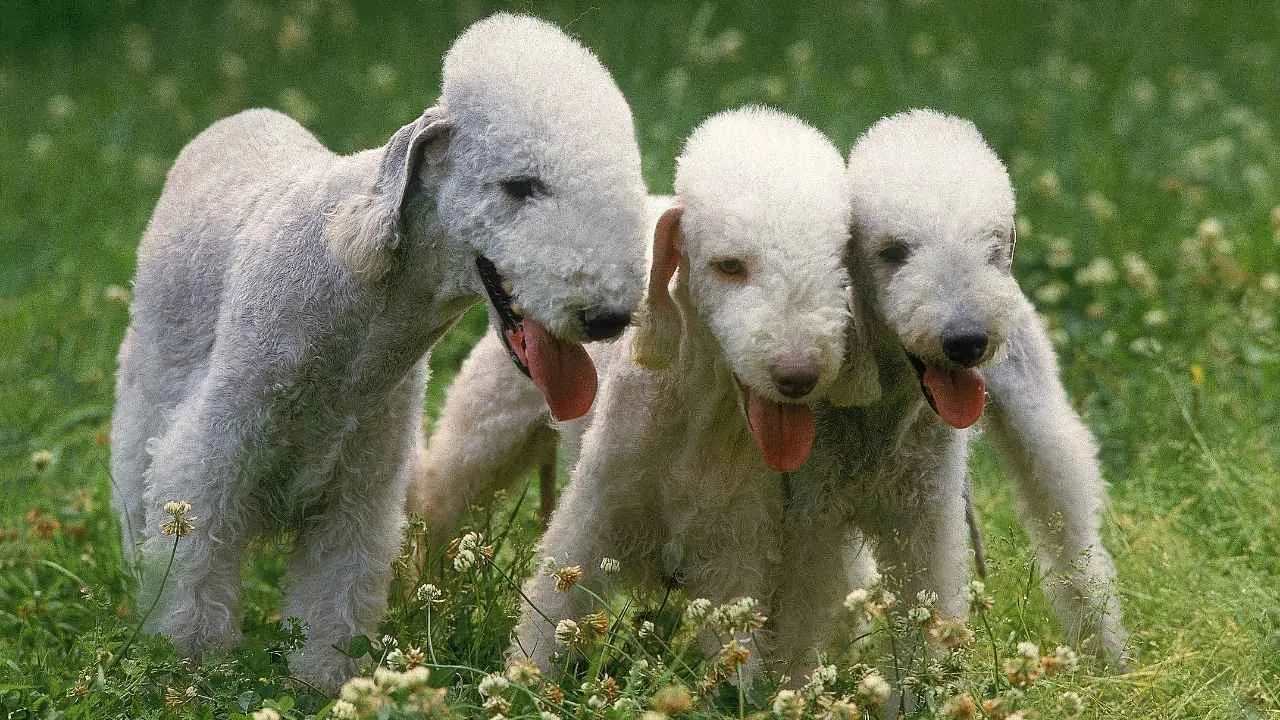
With its lamb-like appearance and distinctively curly fur, the Bedlington Terrier is truly one of the most eye-catching curly-coated dog breeds. Named after the English mining town of Bedlington, where it was originally bred to hunt rats in coal mines, this terrier is as tough as it is elegant.
The breed’s signature look includes a pear-shaped head, tasseled ears, and a curved back, traits that have charmed not only families but also history’s elite.
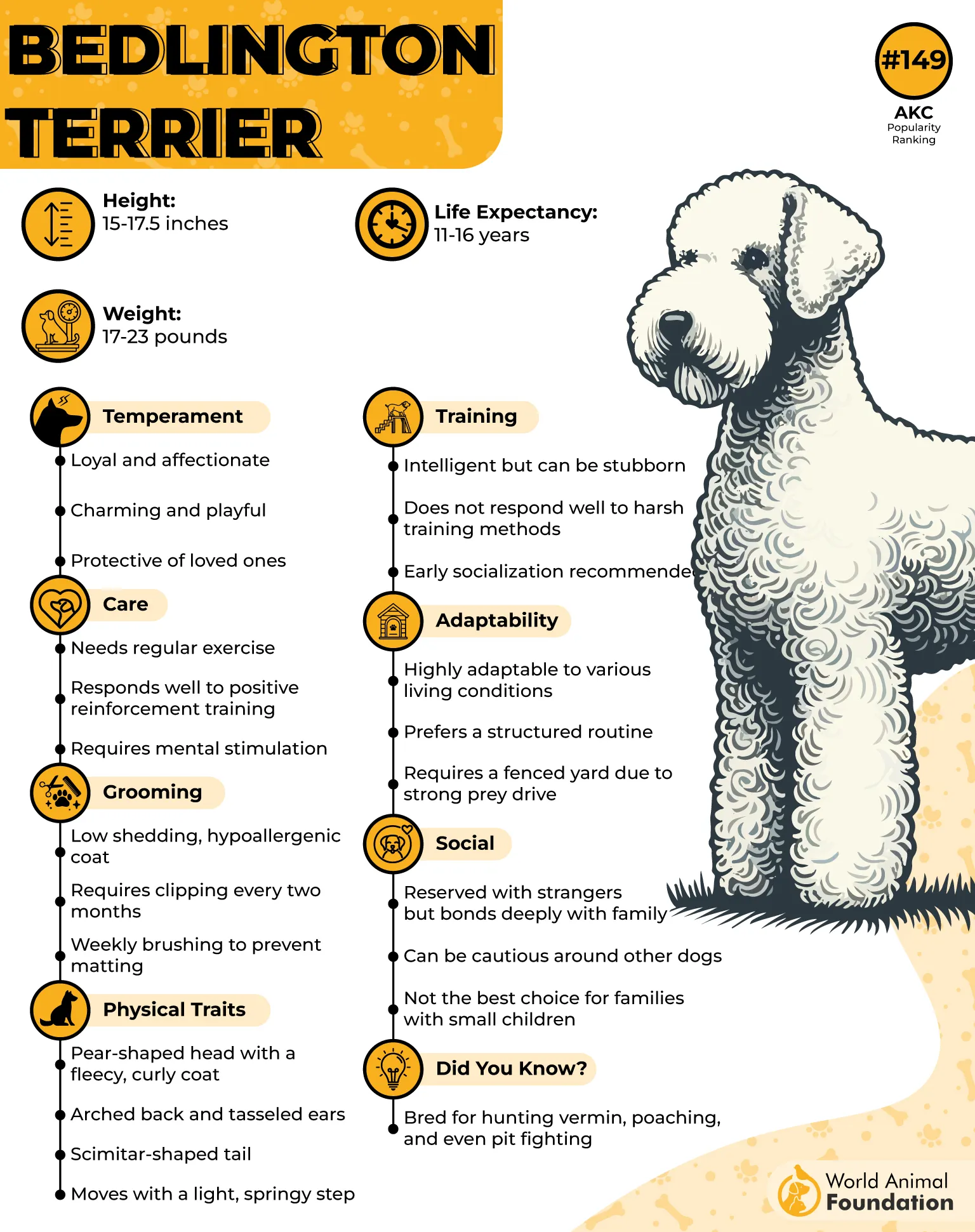
Grooming
Bedlingtons don’t shed much, which is a plus for many dog lovers, but their crisp, curly coat needs consistent care. Brushing several times a week helps prevent tangles and mats, especially if the coat is kept longer.
For those aiming to maintain the breed’s classic lamb-like silhouette, professional grooming is recommended every six weeks. A shorter trim also helps manage coat condition and cleanliness. Regardless of length, regular brushing is essential to maintain the coat’s unique texture and prevent discomfort.
Fact: A Bedlington Terrier named “Timmie,” owned by William A. Rockefeller, took Best in Show at the 1948 Westminster Kennel Club Dog Show.
Conclusion
From the tightly wound curls of the Poodle to the lamb-like fluff of the Bedlington Terrier, curly coat dog breeds stand out not only for their distinctive appearance but also for their historical purpose and grooming needs. These breeds were often developed for water retrieval or harsh climates, and their curly double coat provided necessary protection and insulation. While their appearance is undeniably charming, it comes with grooming responsibilities. Regular brushing is essential to remove dead hair and prevent matting, especially in breeds like the miniature poodle, which continues to be a top choice for allergy-sensitive homes.
For those looking to expand their curly-coated companion options, breeds such as the Kerry Blue Terrier also deserve mention. With a striking, wavy blue-gray coat, this terrier combines the flair of a show dog with the heart of a working companion. Whether you’re drawn to these breeds for their low-shedding appeal or their plush, pettable curls, one thing is clear: curly-coated dogs offer a beautiful blend of form and function, and plenty of personality to go with it.


